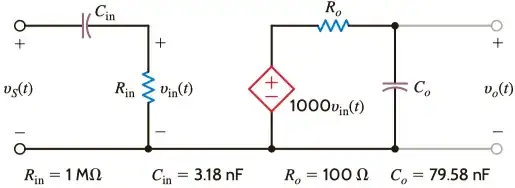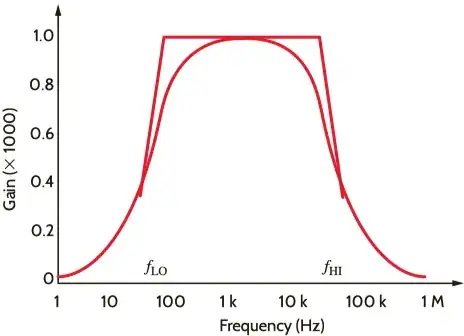I'm trying to understand what the book "Basic Engineering Circuit Analysis" by Irwin is saying at the chapter of variable frequency...
It's trying to amplify a signal from 50 Hz to 20000 Hz. Where it uses this circuit to do that:
So the transfer function is this:
$$G_v(s)=\dfrac{R_{\text{in}}}{R_{\text{in}}+\frac{1}{sC_{\text{in}}}}\times 1000\times \dfrac{1/sC_{0}}{R_0+1/sC_{0}}$$
Which I understand.
Then it says that reorganizing and substituting this equation it yields:
$$G_v(s)=\dfrac{s}{s+100\pi}\times 1000\times \dfrac{40000\pi}{s+40000\pi}$$.
I'm lost here. I understand that it uses the domain frequency \$j\omega\$ instead of the Laplacian domain, and it should be replaced with \$\omega=2\pi f\$. But I don't understand the following:
How does the first equation turn into the second one?
Where did the complex \$j\$ go?
Why does it replace the low frequency in the first term and high \$f\$ on the second?
And my last question within the same example: How is the transfer function approximated as $$G_v(s) \approx \left[\frac{s}{s}\right]1000\left(\frac{1}{1+0}\right) $$
when the frequency is between the low and high frequencies?

